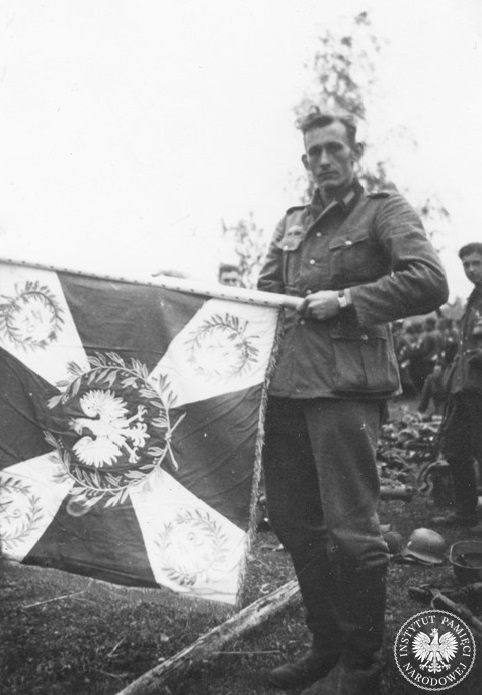On 1 September 1939, without declaring war Germany attacked Poland from the west and north and, together with Slovakia, also from the south. The armed forces of the Reich consisted of over 1.6 million soldiers equipped with around 10,000 mortars and howitzers, over 2,700 tanks, and 1,300 aircraft. The Polish army was relatively strong but, due to the difference in potential, decidedly smaller than the Wehrmacht. Following incomplete mobilisation, Poland managed to equip around 1 million soldiers and had 4,300 mortars and howitzers, around 880 tanks and armoured vehicles, and 400 military aircraft in stock.
The tenacious resistance of Poland against the German aggression forced the Allies to take clear steps. After Hitler rejected the Western ultimatum, France and Great Britain officially declared war on the German Reich on 3 September 1939. Declarations from New Zealand and Australia followed. Regardless of subsequent developments, this was Hitler’s first setback, as he had not managed to downsize the invasion of Poland to a local, bilateral conflict.
In consequence of the Molotov-Ribbentrop pact between the Third Reich and the Soviet Union, on 17 September 1939 the Red Army crossed the borders of Poland. The numbers of the Red Army were an overwhelming advantage, so the Soviets moved quickly into Poland taking more and more towns and cities. Lasting almost two years, the occupation of these territories by the USSR equalled ruthless terror for the Polish citizens. Among the means of repression used by the Soviets were arrests, deportations to gulags, the Katyń Massacre.
On 27 September 1939, due to the dramatic situation of the civilian population in Warsaw a decision to stop the fight was made. The last shots in the 1939 Polish Defensive War were fired in the Lublin region, where the troops of the Independent Operational Group "Polesie" under General Franciszek Kleeberg arrived at the end of September while marching to aid Warsaw. They fought near Kock. They were not crushed in the fights, having inflicted severe losses on German motorized units, but surrendered due to lack of ammunition on 6 October 1939.
Despite the defeat in a five-week long struggle, the Polish authorities interned in Romania did not sign the act of surrender. Under the Constitution in force at the time, President Ignacy Mościcki appointed the former Speaker of the Polish Senate, Władysław Raczkiewicz, as his successor. The first decision of the new President was the establishment of the government of the Republic of Poland headed by Gen. Władysław Sikorski, who announced the continuation of the fight alongside France and Great Britain until Poland regained its independence.
In the 1939 campaign, nearly 70,000 Polish soldiers were killed and 133,000 were injured. About 300,000 were taken prisoner by the Germans, and about 250,000 (including nearly 18,000 officers) by the Soviets. 83,000 fled into neighbouring neutral countries, mainly Romania and Hungary. German losses amounted to approx. 17,000 fallen, whereas Soviet losses are unknown. The Polish public, convinced of the state's military superpower, blamed the defeat on the pre-war authorities. In the following years of the war, however, it turned out that Poland had lost to a state, which by autumn 1941 had conquered most of Europe from Paris to the outskirts of Moscow.
The German invasion of Poland was an extremely brutal campaign with war crimes being committed on a daily basis. Wehrmacht – the armed forces of Nazi Germany – on countless occasions violated international conventions and showed total contempt for its foe.
